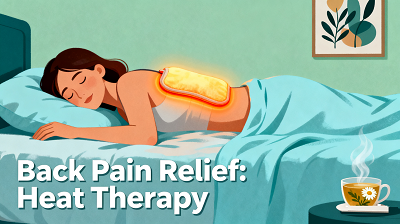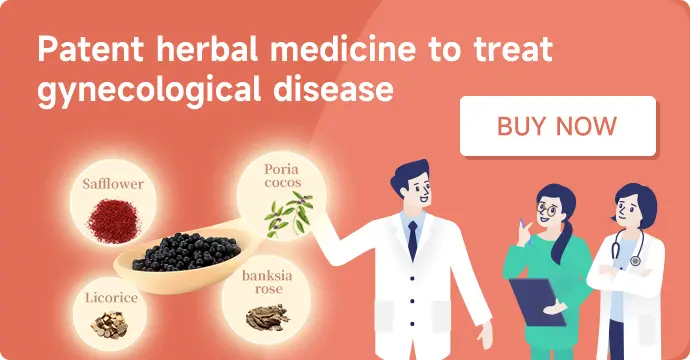Struggling with Endometriosis Symptoms? Proven Back Pain and Painful Sex Relief Options
For millions of women living with endometriosis, the condition brings more than just monthly menstrual cramps. Two of the most distressing, life-disrupting symptoms are debilitating back pain and painful intercourse (dyspareunia)—yet they’re often overlooked or dismissed. Unlike mild discomfort, these symptoms can make simple acts like sitting at work, lifting a child, or being intimate with a partner feel impossible. If you’re one of the many women struggling with this, know that you’re not alone—and there are evidence-based ways to find relief.
This SEO guide breaks down why endometriosis causes these specific pains, how to diagnose the root cause, and the most effective treatments (including Traditional Chinese Medicine like Fuyan Pill to reclaim your quality of life.

Why Endometriosis Triggers Debilitating Back Pain and Painful Intercourse
Endometriosis occurs when tissue similar to the uterine lining (endometrium) grows outside the uterus—on organs like the ovaries, fallopian tubes, pelvic lining, or even the lower back and rectum. These abnormal tissue growths respond to hormonal changes, swelling and bleeding during your menstrual cycle. The result? Inflammation, scarring, and adhesions (tough tissue bands that bind organs together)—all of which directly cause back pain and painful sex.
1. The Link to Debilitating Back Pain
Most people associate endometriosis with pelvic pain, but back pain (often in the lower back, sacrum, or even radiating down the legs) is just as common—especially in moderate to severe cases. Here’s why:
Tissue Growth on Back Structures: Endometrial tissue can attach to the sacrum (the triangular bone at the base of the spine), lower back muscles, or even the nerves that run through the pelvis to the back. When this tissue swells or bleeds, it irritates nearby nerves, causing sharp, stabbing, or dull aching pain.
Adhesions Pulling on Spinal Nerves: Scar tissue from repeated inflammation can bind pelvic organs (like the uterus or ovaries) to the lower back. Every movement—sitting, standing, bending—stretches these adhesions, pulling on spinal nerves and triggering intense back pain.
Referred Pain: Inflammation in the pelvis can send pain signals to the lower back via shared nerve pathways. This “referred pain” often feels like a deep, constant ache that worsens during menstruation, exercise, or long periods of sitting.
2. The Link to Painful Intercourse (Dyspareunia)
Painful sex is one of the most isolating symptoms of endometriosis, affecting 60–80% of patients. It occurs because:
Tissue Growth in Sexual Contact Zones: Endometrial lesions often grow on the cervix, vaginal walls, or the pouch of Douglas (the space behind the uterus)—areas that are pressed or stretched during intercourse. Even gentle penetration can irritate these lesions, causing burning, stabbing, or cramping pain.
Adhesions Restricting Movement: Scar tissue can freeze the uterus, ovaries, or vaginal walls in place. During sex, any movement that stretches these adhesions (like deep penetration) causes sharp pain.
Pelvic Muscle Spasms: Chronic pain from endometriosis can make pelvic floor muscles tense or spasm. These spasms tighten the vaginal canal, making intercourse painful or even impossible.
How to Diagnose: Ensuring Back Pain and Dyspareunia Are From Endometriosis
Back pain and painful sex can stem from other issues (e.g., herniated discs, pelvic inflammatory disease, or vaginismus), so accurate diagnosis is critical. Here’s what to expect:
Detailed Symptom History: Your doctor will ask about the timing of your pain (e.g., Does it worsen during your period? Is sex painful every time, or only during certain positions?). Be honest—even uncomfortable details help pinpoint the cause.
Pelvic Exam: A manual exam may reveal tender spots or nodules (endometrial lesions) on the pelvic organs or vaginal walls.
Imaging Tests: Ultrasounds can detect endometriomas (cysts filled with old blood), while MRI scans provide detailed images of deep lesions on the back or pelvic organs.
Laparoscopy: The gold standard for diagnosis, this minimally invasive surgery lets doctors see and biopsy endometrial tissue outside the uterus. It’s the only way to confirm endometriosis and assess its severity.
Effective Treatments for Endometriosis-Related Back Pain and Painful Intercourse
Treating these symptoms requires a mix of pain management, reducing endometrial tissue growth, and addressing scarring/adhesions. Below are the most proven options:
1. Western Medical Treatments: Fast Pain Relief and Tissue Control
Hormonal Therapies: These suppress estrogen (the hormone that fuels endometrial growth), reducing lesion size and inflammation. Options include:
- Birth control pills (regulate cycles and reduce bleeding).
- Progestins (e.g., medroxyprogesterone) to thin endometrial tissue.
GnRH agonists (e.g., leuprolide) for severe cases—short-term use (6 months or less) to induce a “medical menopause” and shrink lesions.
Note: Hormonal therapies ease back pain and dyspareunia in 70–80% of women but may have side effects (hot flashes, mood swings).
Pain Medications: Over-the-counter NSAIDs (ibuprofen, naproxen) help mild pain, but severe cases may need prescription pain relievers (e.g., tramadol) or muscle relaxants (for pelvic spasms). For nerve-related back pain, antidepressants (e.g., amitriptyline) or anticonvulsants (e.g., gabapentin) can block pain signals.
Surgery: Laparoscopic surgery removes or ablates (destroys) endometrial lesions and cuts adhesions. It’s highly effective for back pain (relieves nerve pressure) and dyspareunia (frees restricted organs). For deep lesions on the back or sacrum, robotic-assisted surgery may be used for precision.
2. Traditional Chinese Medicine (TCM): Holistic Relief with Fuyan Pill
For women seeking natural, long-term relief—especially those who want to avoid hormonal side effects or preserve fertility—TCM is a powerful option. TCM views endometriosis as a result of “blood stasis,” “damp-heat,” or “kidney deficiency,” and treatments focus on clearing these imbalances to reduce pain and heal the pelvic environment.
Key TCM Treatment: Fuyan Pill
Fuyan Pill is a classic TCM herbal formula tailored for gynecological conditions like endometriosis. It combines over 50 herbs (e.g., Houttuyniae Herba, Persicae Semen, Scutellariae Radix) to target the root causes of back pain and dyspareunia:
Reduces Inflammation: Herbs like Houttuyniae Herba (Yuxingcao) and Scutellariae Radix (Huangqin) clear “damp-heat” in the pelvis, easing the nerve irritation that causes back pain and burning during sex.
Resolves Blood Stasis: Ingredients like Persicae Semen (Taoren) and Carthami Flos (Honghua) improve blood circulation, breaking down scar tissue and adhesions that pull on spinal nerves and restrict pelvic movement.
Regulates Hormones: By balancing qi (energy) and blood, Fuyan Pill helps control endometrial tissue growth without disrupting natural hormone cycles—ideal for women trying to conceive.
Acupuncture for Pain Relief
Acupuncture complements Fuyan Pill by unblocking meridians (energy pathways) in the pelvis and back, reducing pain and relaxing pelvic muscles. Common acupoints include:
Sanyinjiao (SP6): Inner leg, 3 finger-widths above the ankle—eases pelvic and back pain by balancing the liver, spleen, and kidneys.
Weizhong (BL40): Back of the knee—relieves lower back pain by stimulating the bladder meridian.
Guanyuan (CV4): Below the navel—reduces pelvic inflammation and improves blood flow to reproductive organs, easing dyspareunia.
Most patients feel pain relief after 4–6 sessions, with regular weekly treatments (for 2–3 months) providing long-term benefits.
3. Physical Therapy: Relaxing Muscles and Improving Mobility
Pelvic floor physical therapy (PFPT) is a game-changer for both back pain and painful sex. A trained therapist will:
Release Tight Pelvic Muscles: Using manual techniques (internal or external), they relax spasms that cause vaginal tightness and referred back pain.
Stretch Adhesions: Gentle exercises and stretches break up scar tissue, improving pelvic mobility and reducing pain during sex.
Teach Home Exercises: Kegels (to strengthen weak muscles) and relaxation techniques (e.g., diaphragmatic breathing) help you manage pain between sessions.
Lifestyle Tips to Ease Pain Daily
Alongside medical and TCM treatments, these simple changes can reduce back pain and make intercourse more comfortable:
1. For Back Pain Relief
Heat Therapy: Use a heating pad or warm compress on your lower back for 15–20 minutes, 2–3 times daily. Heat relaxes muscles and reduces inflammation.
Supportive Posture: Avoid slouching when sitting—use a lumbar roll to support your lower back. When standing for long periods, shift weight between feet to reduce pressure on the sacrum.
Gentle Movement: Low-impact exercise like walking, swimming, or yoga (child’s pose, cat-cow) improves blood flow and eases back tension. Avoid heavy lifting or high-impact workouts (e.g., running) during flares.
2. For Less Painful Intercourse
Choose Gentle Positions: Positions where you control depth (e.g., woman on top) or limit penetration (e.g., side-lying) reduce pressure on endometrial lesions.
Use Lubrication: Water-based lubricants (avoid oil-based ones, which break down condoms) ease vaginal dryness and friction, reducing burning pain.
Communicate with Your Partner: Talk openly about what hurts and what feels okay. Take breaks, and don’t rush—emotional comfort can reduce pelvic muscle tension.
3. Reduce Inflammation Overall
Eat an Anti-Inflammatory Diet: Focus on omega-3 rich foods (salmon, walnuts), leafy greens, and berries. Avoid processed foods, sugar, and caffeine—they worsen inflammation.
Manage Stress: Chronic stress tightens pelvic muscles and worsens pain. Try meditation, deep breathing, or a warm bath with Epsom salts to relax.
Q&A:
Q: Is back pain from endometriosis just “normal” menstrual ache?
A: No. Endometriosis-related back pain is often constant (not just during your period) and is usually linked to nerve irritation or adhesions. Unlike typical cramps, it doesn’t disappear with simple over-the-counter painkillers.
Q: Does painful sex mean I’m not relaxed enough?
A: Absolutely not. Dyspareunia (painful intercourse) in endometriosis is caused by physical factors like lesions and adhesions, not by your state of mind. It’s important to seek medical care rather than blaming yourself.
Q: Do I have to live with these symptoms forever?
A: No. With the right treatment—whether surgery, Traditional Chinese Medicine like Fuyan Pill, or physical therapy—studies show that 80–90% of women achieve significant relief from back pain and painful intercourse.
Conclusion
Endometriosis-related back pain and painful intercourse can feel overwhelming, but they don’t have to control your life. By combining Western treatments (hormones, surgery), TCM (Fuyan Pill, acupuncture), and lifestyle adjustments, you can reduce pain, improve intimacy, and regain your independence.
The key is to advocate for yourself—don’t let doctors dismiss your symptoms. Work with a team of specialists (endometriosis-focused gynecologist, TCM practitioner, physical therapist) to create a personalized plan. With time and consistency, you can move, work, and be intimate without fear of pain.
You deserve to live comfortably—start your journey to relief today.
Severe Endometriosis Treatment: Chronic Pelvic Pain Relief and Infertility Solutions
previous pageEndometriosis and Debilitating Bowel & Bladder Pain: Diagnosis, Treatments, and Hope for Relief
next page- Endometriosis and Debilitating Bowel & Bladder Pain: Diagnosis, Treatments, and Hope for Relief
- Struggling with Endometriosis Symptoms? Proven Back Pain and Painful Sex Relief Options
- Severe Endometriosis Treatment: Chronic Pelvic Pain Relief and Infertility Solutions
- New Endometriosis Pill Approved on NHS: What This Means for Patients and the Role of Traditional Chinese Medicine
- Can Endometriosis Be Endured Until Menopause?
Testimonials
- Adenomyosis with Ureaplasma Urealyticum Cured by Fuyan Pill
- Tubal blockage with hydrosalpinx can be cured by TCM shortly
- Fuyan Pill Helps A woman with Adenomyosis Get Pregnant
- A Woman with Hydrosalpinx Is Cured with Fuyan pill
- Pelvic Inflammatory Disease Testimonials
- Irregular Vaginal Bleeding and Endometrial Thickening Cured by Fuyan Pill
- Pruritus Vulvae and Frequent Urination: Mycoplasma Infection Cured after 2 Courses



